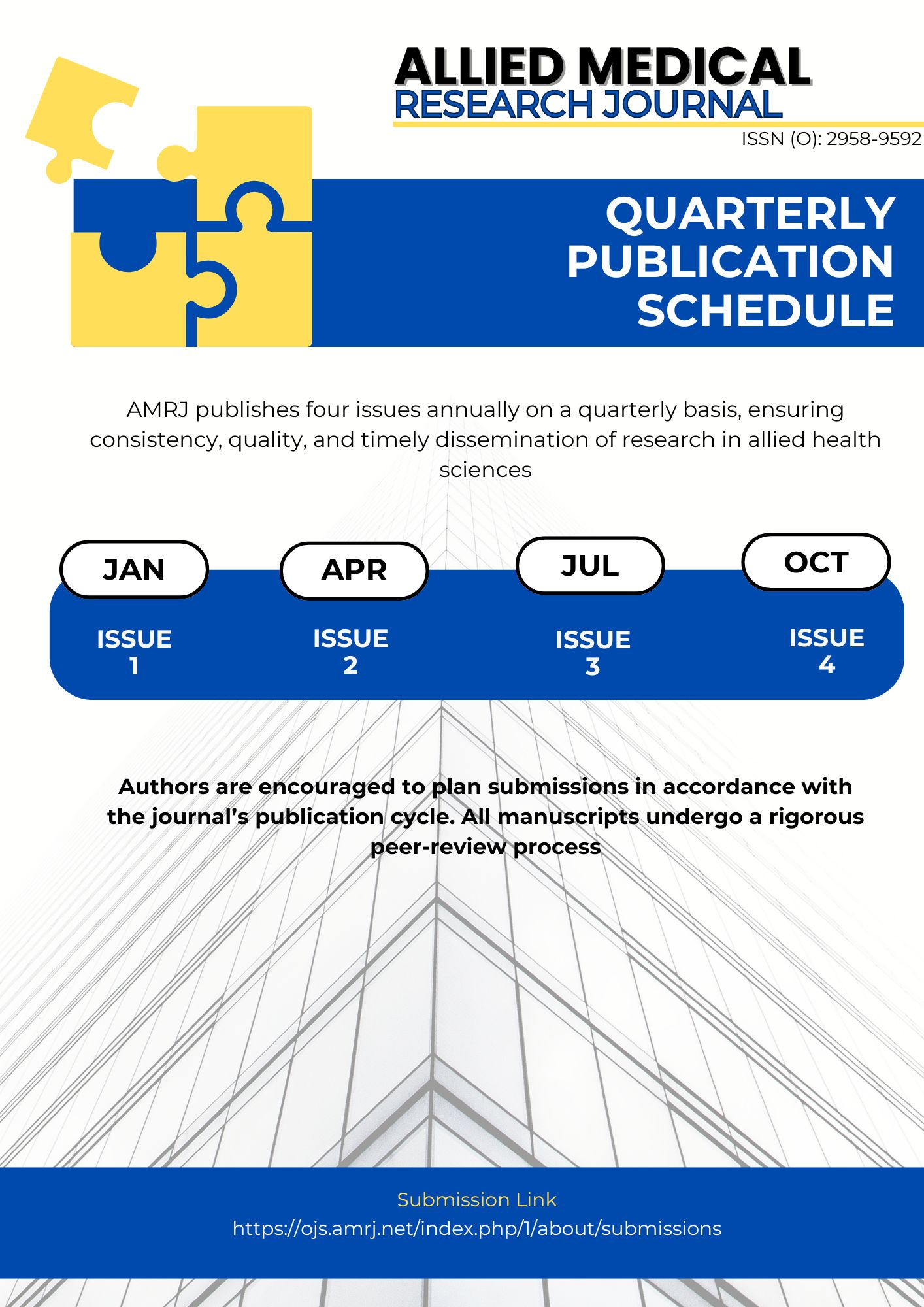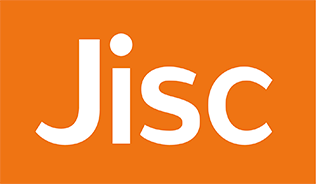Evaluating the Impact of Weight Bearing and Non-Weight Bearing Exercises on Pain and Physical Function in Obese Knee Osteoarthritic Patients: A Randomized Controlled Trial
Keywords:
Exercise, Obesity, Osteoarthritis, Pain, Physical ActivityAbstract
Background
Exercise is advised as a primary treatment for knee OA; however, the best exercise is still unknown among these patients with different comorbid like obesity. Hence, this trial was aimed to identify which regime is more suitable in patients with knee OA and obesity.
Methods
A randomized controlled trial conducted in Lahore, Pakistan, compared the effectiveness of two exercise regimens i.e. Group A: Weight-bearing functional exercise program and Group B: Quadriceps strengthening through non-weight bearing techniques in obese individuals aged 50 and above with painful medial knee OA. A total of 128 participants were randomly assigned to either group. They attended supervised sessions with a therapist 5 times/week for 12 weeks. Pain and physical function were measured as primary outcomes at baseline and after the intervention.
Results
The mean age of participants was 57±4.03, with 78 females and 50 males. The results revealed that outcomes were improved in both groups. However, Group B showed more significant results, with a mean of 3.92±0.9, whereas Group A results were also substantial, with a mean of 4.53±1.02. The findings were consistent for physical function, which improved more in Group B with a mean of 42.35±3.02 compared to Group A with a mean of 45.68±81.
Conclusion
Both groups showed significant improvement in both outcomes. However, participants in non-weight-bearing quadriceps strengthening show more statistically and clinically relevant results.
References
Musculoskeletal health (2022) World Health Organization. World Health Organization. Available at: https://www.who.int/news-room/fact-sheets/detail/musculoskeletal-conditions.
Cieza A, Causey K, Kamenov K, Hanson SW, Chatterji S, Vos T. Global estimates of the need for rehabilitation based on the Global Burden of Disease study 2019: a systematic analysis for the Global Burden of Disease Study 2019. The Lancet. 2020;396(10267):2006-17.
Williams A, Kamper SJ, Wiggers JH, O'Brien KM, Lee H, Wolfenden L, Yoong SL, Robson E, McAuley JH, Hartvigsen J, Williams CM. Musculoskeletal conditions may increase the risk of chronic disease: a systematic review and meta-analysis of cohort studies. BMC Medicine 2018;16:167
Hartvigsen J, Hancock MJ, Kongsted A, et al. What low back pain is and why we need to pay attention. Lancet 2018; 391: 2356–67.
Cui A, Li H, Wang D, Zhong J, Chen Y, Lu H. Global, regional prevalence, incidence and risk factors of knee osteoarthritis in population-based studies. EClinicalMedicine. 2020 Dec 1;29:100587.
Cross M, Smith E, Hoy D, Nolte S, Ackerman I, Fransen M, Bridgett L, Williams S, Guillemin F, Hill CL, et al. The global burden of hip and knee osteoarthritis: estimates from the global burden of disease 2010 study. Ann Rheum Dis. 2014;73(7):1323–30.
Johnson VL, Hunter DJ. The epidemiology of osteoarthritis. Best Pract Res Clin Rheumatol. 2014;28(1):5–15
Ackerman IN, Kemp JL, Crossley KM, Culvenor AG, Hinman RS. Hip and knee osteoarthritis affects younger people, too. J Orthop Sports Phys Ther. 2017; 47(2):67–79
Fransen M, McConnell S, Harmer AR, Van Der Esch M, Simic M, Bennell KL. Exercise for osteoarthritis of the knee: a Cochrane systematic review. Br J Sports Med. 2015;49(24):1554–7
Bennell KL, Kyriakides M, Metcalf B, Egerton T, Wrigley TV, Hodges PW, Hunt MA, Roos EM, Forbes A, Ageberg E, et al. Neuromuscular versus quadriceps strengthening exercise in patients with medial knee osteoarthritis and varus malalignment: a randomized controlled trial. Arthritis Rheumatol. 2014;66(4):950–9.
Bennell KL, Nelligan RK, Kimp AJ, Wrigley TV, Metcalf B, Kasza J, Hodges PW, Hinman RS. Comparison of weight bearing functional exercise and non-weight bearing quadriceps strengthening exercise on pain and function for people with knee osteoarthritis and obesity: protocol for the TARGET randomised controlled trial. BMC musculoskeletal disorders. 2019 Dec;20(1):1-0.
Williams N. The Borg rating of perceived exertion (RPE) scale. Occupational medicine. 2017 Jul 1;67(5):404-5.
Tanaka R, Ozawa J, Kito N, Moriyama H. Efficacy of strengthening or aerobic exercise on pain relief in people with knee osteoarthritis: a systematic review and meta-analysis of randomized controlled trials. Clinical rehabilitation. 2013 Dec;27(12):1059-71.
Sprouse RA, Harris GD, Sprouse GD. A practical approach to knee OA. J Fam Pract. 2020 Sep 1;69(7):327-4.
Tanaka R, Ozawa J, Kito N, et al. Efficacy of strengthening or aerobic exercise on pain relief in people with knee osteoarthritis: a systematic review and meta-analysis of randomized controlled trials. Clin Rehabil. 2013;27:1059-1071.
Mikesky AE, Mazzuca SA, Brandt KD, Perkins SM, Damush T, Lane KA. Effects of strength training on the incidence and progression of knee osteoarthritis. Arthritis Care & Research: Official Journal of the American College of Rheumatology. 2006 Oct 15;55(5):690-9.
Fyfe JJ, Hamilton DL, Daly RM. Minimal-dose resistance training for improving muscle mass, strength, and function: A narrative review of current evidence and practical considerations. Sports Medicine. 2021 Nov 25:1-7.
Phillips SM, Winett RA. Uncomplicated resistance training and health-related outcomes: evidence for a public health mandate. Current sports medicine reports. 2010 Jul;9(4):208.
Vidmar MF, Baroni BM, Michelin AF, Mezzomo M, Lugokenski R, Pimentel GL, Silva MF. Isokinetic eccentric training is more effective than constant load eccentric training for quadriceps rehabilitation following anterior cruciate ligament reconstruction: a randomized controlled trial. Brazilian journal of physical therapy. 2020 Sep 1;24(5):424-32.

Downloads
Published
Issue
Section
License
Copyright (c) 2023 Sara Khan, Dr. Saud Islam, Aqeel Ahmed , Rabia Khan, Sharjeel Tasneem, Ghousia Shahid

This work is licensed under a Creative Commons Attribution-NonCommercial 4.0 International License.








